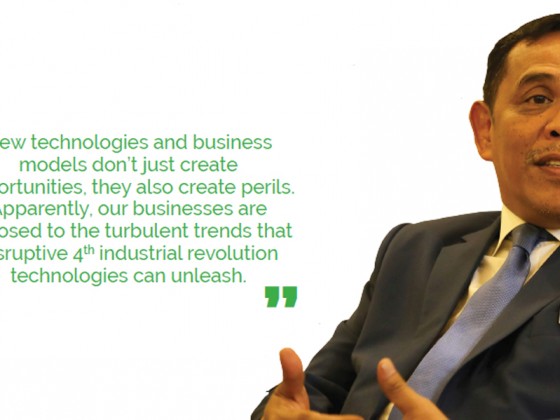by | Nadia Sullivan, nadiasullivan@might.org.my
Who are the millennial consumers?
Millennials are a generation of young people growing up in a world of accelerated transformation. Characterised by their use and adaptation of technology, millennials have led numerous new trends in daily living consumption, values, experience, motivation, and, ultimately, a remap of the consumer segment buying behaviour.
This generation, according to the Pew Research Centre, is the demographic cohort born between 1981 and 1996, now between the ages of 23 and 38. They are currently developing as a social group who are deeply influenced by technological changes embedded early on from childhood.
Loosely determined by geographical and theoretical positions, the generational range of this cohort however varies widely.
At the extremes, millennials are a result of key world events. For this, social and economic changes, as well as technological integration have largely shaped their everyday lives. In fact, millennials were the first generation to grow up in the digital age. Generally everywhere, this generation is essentially no different to others, as are Malaysian Millennials.
Culture and shared life experiences have led them to the development of similar attitudes and beliefs. Millennials know full well what motivates them as much as what the consequences of their expectations and behaviour can unleash.
Malaysian millennials today grew up in an era defined by key events that shocked the world locally and globally. To name a few, the 1998 economic recession that hit Asian countries, Commonwealth Games held in Bukit Jalil National Stadium and the September 11 terrorist attack were some of the most telling. Most of them were old enough to grasp the gravity of the events, and the memories were still vivid.
Millennials and stereotypes
When you hear about millennials, it may call to mind some stereotypes. They are self-absorbed, foolish with money, not long-term planners or perhaps, often, we hear that they are still dependent on their parents. These are just some of the most typical notions associated with the generation.
Interestingly however, some millennials believe and are deeply entrenched in the stereotypes commonly linked to them. Despite possessing good habits, the uneasiness and pessimism that’s weighing on millennials’ minds is their overspending. A large majority of millennials are found to be carefree about spending beyond their means, and as a result, this is gravely sinking the generation in a sea of debts.
Despite the stereotypes, millennials are actually just as good, or better, than other generations in some regards when it comes to managing money. A large majority of them are getting their finances in order. In truth, millennials are more likely to set saving goals and a majority of them are able to meet these goals. Furthermore, most millennials share a common sentiment, in that, they feel financially just as secured, almost on par with Generation X and Boomers. At a time when the labour market is tight, decidedly, millennials are also more likely to make bold moves, developing and using their sense of belief as a bargaining chip in asking for a raise.
For all the stereotypes, millennials deserve more credit. In contrast, they are a tad more cautious when it comes to managing money and their lives. Let’s not forget, many millennials entered the workforce during the most severe economic downturn since the great depression. However, they seem to have weathered the storm quite admirably.
Characteristics
Convenience and flexibility
Millennials have grown up and matured alongside mobile technology. They expect to use it in every aspect of their lives. By and large, as mobile convenience is paramount to this group, millennials are changing the rules of the retail sector. They make purchases, use social media, chat with friends, do online research and pay for products via mobile.
Further, millennials have often been portrayed as consumers who are at the epicentre of the disruption taking place in every corner of the society, including marriage, childbearing and home ownership.
Certainly, there are vast generational differences between this group and past cohorts. Millennials are better educated, they are marrying, buying homes and having children later in life than boomers did at the same age. But this is just a part of a broader trend that’s been underway for decades.
The digital generation
The Digital Generation comprise of those who grew up using technology and the internet. They feel at home in the online domain. Their media consumption habits are remaking the consumer landscape. But increasingly, these preferences make millennials hugely different from the generations before them. And as more millennials rise through the ranks, so too is their purchasing power.
Improving the payment experience through self-checkout kiosks and advanced digital payment technologies is essential to keeping the millennial shopper. They use multiple devices to make purchases and have started turning their mobile devices into handheld wallets. The relentless focus on perfecting technology has set a new standard across the industry that millennials now accept as the norm. Retailers must be able to provide streamlined, user-friendly systems and processes in order to retain millennials.Certainly, there are vast generational differences
between
Technologically adept
Millennials are tech savvy as their roots are steeped in the internet and mobile. With companies like Amazon being the driving force behind the way we make purchases, everything seems to be happening online, right on our phones. Under the influence of millennial consumers, retailers such as Starbucks are winning over the generation with their mobile wallet app which makes it easier for customers to pay while delivering additional perks such as discounts and free drinks.
Personalisation
Millennials demand a customer centric experience in which they feel wanted and valued. Whether in stores or social media channels, showing interest in these shoppers creates loyalty. In order to do this, retailers need to closely examine what they’re currently doing with customer data, and ensure this information is being utilised to deliver a more personalised in-store experience. This can include where customers shopped last, what was purchased, and their motivation to shop.
Millennials and their purchasing power
Fittingly called the DIY generation, creating content that teaches millennials how to do things can actually swing their buying decision in your favour. Millennials spend more than other generations on comforts and conveniences like taxis, pricey coffee and dining out.
The attitudes and behaviour of millennial consumers are shifting dramatically, presenting opportunities and challenges for companies. They utilise social media in real time, posting photos of their whereabouts and purchases, affording retailers instant social traction while sharing their experience with others. In order to appeal to this generation, retailers need to provide a seamless customer facing retail experience. Whether this is online or in stores, millennials seek customer service professionals who understand their preferences and make recommendations tailored to their specific needs.
Millennials’ buying power will soon surpass that of the generations before them. Retailers will have to work harder to meet their demands as they influence trends and redefine buying habits. They will continue to utilise technology and expect that the world around them to adapt to them quickly.
Consumerism hitting a crisis – millennials staying away from retail stores
Looking back to 2009, when dining out takes too long, we would all agree that food delivery options would only go to Pizza Hut or Dominos Pizza. But fast forward 10 years, whether it be ordering your next meal or hailing a ride through the Grab app straight from your mobile has become normal, technology is how millennials go about getting things done.
With millennials—who are plugged into their devices all the time, this has somehow disrupted traditional purchasing patterns. Not only food, this has created a gap between what shoppers are looking for and what brands are delivering—from head to toe. Anything that we used to find in stores is now available online. With millennial consumers making purchases from food, clothing and everyday items online at least once a month, it is really up to retailers to keep up to stay ahead.
As the millennial generation has reached their prime in their careers and spending power, as a result, their impact on the economy will be significant. This will require brands to ultimately adjust many of the models of how they operate as millennials have truly come of age during a defining time of technological change, globalisation and economic disruption. These factors have given them a distinctly different set of behaviour and experiences.
For example, the retail culture has changed everything. This means that players sometimes quickly come and go. This speed is accelerated by new technology and the group of shoppers using it the most will be the millennials. Brands connecting through culture has seen great changes over the last decade.
Social media and digital innovations have revolutionised how culture impacts marketing and its role in consumer strategy. Therefore, retailers must be able to provide streamlined, user-friendly systems and processes in order to retain millennial buyers.
To keep and encourage millennial consumers to spend, retailers must be creative in their branding. This group of young consumers do not only use social media to share photos and hashtags to share their purchasing experience, but they culturally do so to engage with the brands they associate themselves with. Retailers must now follow trends created by these young consumers in order to capture a broader audience.
Digital marketing: The key to targeting millennials
Millennials constitute an important group of the consumer market. In a country where its residents spend an increasing amount of time and money online, and have an average of four social media accounts, it seems somewhat paradoxical that companies globally continue to be unsure of just how much impact the digital marketing industry can have on their profitability.
With the increasing usage of digital media by consumers, more companies are using digital marketing to reach their target markets. Millennials have been identified as a driving force behind online shopping. Their access to digital media allowfs them to communicate and purchase from any supplier anywhere in the world. Computers and mobile phones are common place, and you might also call them essential.
Statistics show that 96% of millennials own a smart phone, making mobile marketing a huge investment for companies targeting this young cohort. Apps and social network advertising have taken their place as some of the best marketing strategies to target youths.
Instagram, Twitter, and Facebook are among the most popular social networking and messaging apps and websites available. These technological platforms are empowering millennials to be more active in the creation and support of myriad products and brands. Word-ofmouth goes around the world these days. This generation wants to have a say in all aspects of a product, even its promotion. Therefore, there is a compelling need for marketers to realign their techniques in order to positively engage this vocal group of consumers.
The future of consumerism: the millennial perspective
Millennials’ attitudes are early indicators of widespread future trends. Companies that closely pay attention today will gain valuable insights into tomorrow’s opportunities and get a head start to capture a larger share of millennials’ wallets.
Millennials’ needs are different from those of previous generations, and perhaps companies will need to rethink their strategy to boost their brands, business models, and marketing. At the speed of today’s technology breakthrough, there will be more untapped potential in the retail industry. To get ahead, companies must create and market relevant products and services that resonate with millennials to meet their dynamic expectations. The question is no longer if and when brands should embrace the digital opportunity, but how they should go about doing it. The answer lies in understanding, accepting and embracing millennials’ distinct characters and values when considering their marketing and business models.











